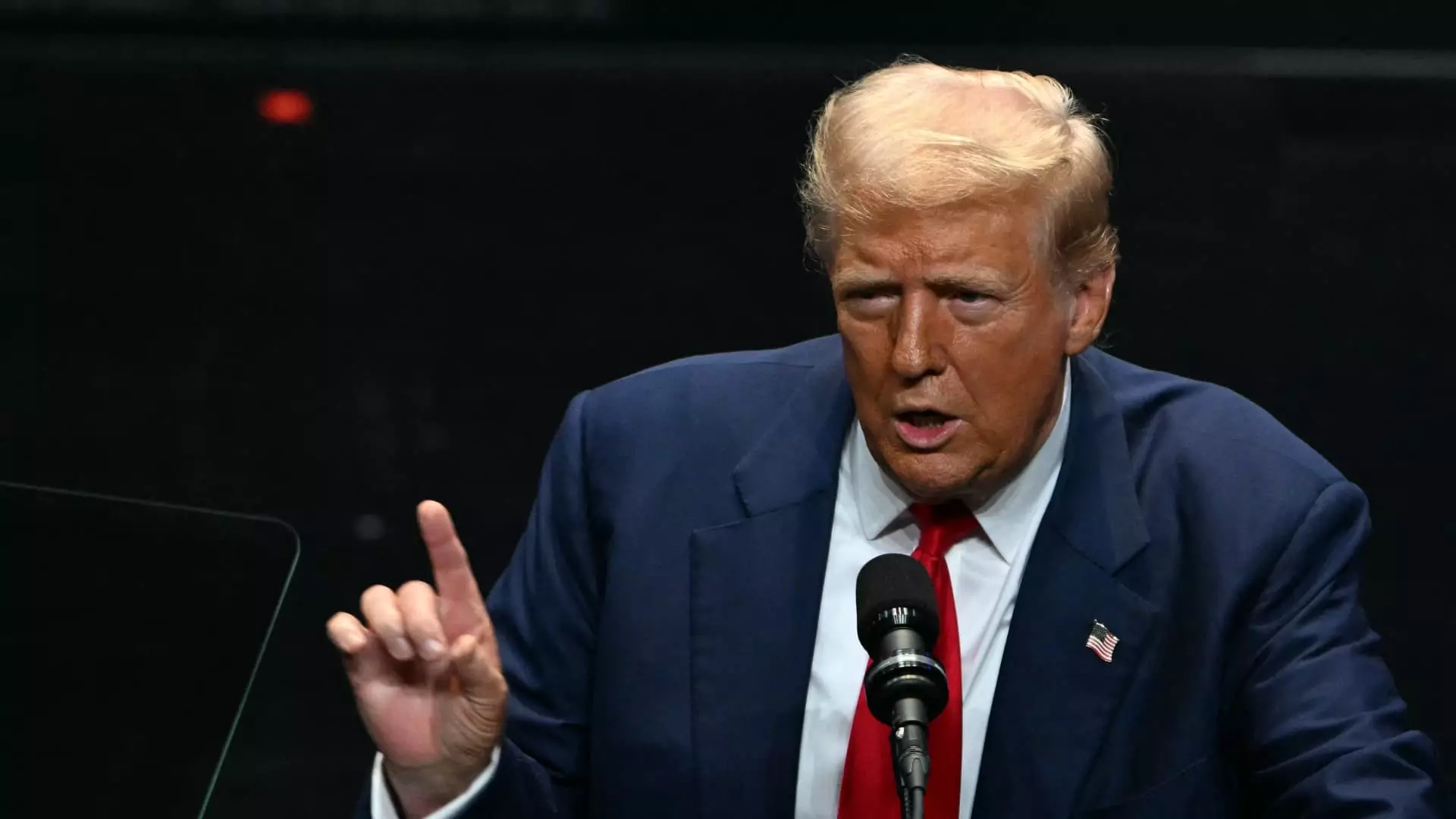In a recent rally held in Savannah, Georgia, former President Donald Trump presented a series of ambitious manufacturing proposals aimed at revitalizing American industry. His remarks come as Vice President Kamala Harris gears up for her own economic policy release, creating a dynamic political landscape as both candidates vie for voters’ attention. Below, we dissect the implications of Trump’s proposals, evaluating their potential impact on the economy, while contrasting them with Harris’s approach to fiscal policy.
Central to Trump’s newfound economic platform is his commitment to expand research and development (R&D) tax credits for American manufacturers. By proposing that U.S.-based companies should be able to deduct 100% of the costs associated with heavy machinery and equipment in their first year of purchase, Trump is signaling a significant pivot from the previous tax framework established under the 2017 Tax Cuts and Jobs Act (TCJA). The TCJA initially phased out the immediate write-off of R&D expenses, compelling businesses to amortize these costs over five years—a move criticized for hastening a decline in domestic innovation.
While the restoration of immediate expensing could invigorate investment in manufacturing sectors, it raises questions about the sustainability of such a proposal. Could this approach lead to increased deficits or higher individual taxes to offset these breaks? Moreover, it serves as a reminder of the cyclical nature of political promises tied to economic policy, where similar pledges were made before both the 2016 and 2020 elections.
In a related move to bolster domestic manufacturing, Trump announced plans to establish a “manufacturing ambassador” position. This individual would be tasked with the goal of enticing foreign manufacturers to relocate their operations back to the United States. Such rhetoric aligns with Trump’s historical stance on bringing jobs back to America, yet raises logistical questions about the efficacy of appointed ambassadors in impacting large-scale investment decisions.
Additionally, Trump reiterated his stringent trade policies by threatening to impose tariffs as high as 200% on vehicles imported from Mexico. While aggressive trade policies may resonate with certain voter segments, they also risk inflaming tensions with trading partners and inciting retaliatory measures. Such a tit-for-tat approach can create uncertainty in the markets, potentially harming domestic businesses that rely on import relationships for goods and materials.
As Trump seeks to fortify his economic strategy, Vice President Kamala Harris is preparing to unveil her own economic proposals, an effort partly positioned as a rebuttal to Trump’s agenda. During a recent campaign call that featured billionaire investor Mark Cuban, Harris’s approach was portrayed as more methodical and considered, contrasting sharply with Trump’s more spontaneous or dramatic proclamations.
Critics of Harris have pointed to her stringent corporate regulations and proposed tax hikes as potential impediments to business growth. However, proponents argue that these measures are necessary to create a more equitable economic landscape. Cuban’s endorsement of Harris as “better for business” suggests a growing sector of corporate America may prefer a more moderate regulatory framework as opposed to the unpredictable tariffs projected by Trump.
As both candidates navigate the troubled waters of economic recovery amidst a post-pandemic landscape, their proposals—and voters’ reactions to them—will likely play a significant role in influencing the upcoming election. While Trump’s promise to restore tax credits and reinvigorate manufacturing may resonate with certain demographics fatigued by globalization, the potential consequences of his trade policies loom large.
In contrast, Harris’s impending policy rollout might appeal to a more progressive base, even in the face of concerns regarding potential business regulations. The battle for economic credibility between these two candidates indicates the complications voters face in discerning which narrative offers a viable path to recovery and growth. Ultimately, the effectiveness of these proposals will depend not only on political rhetoric but also on their capacity to genuinely stimulate a faltering economic landscape while addressing the concerns of a changing workforce.

Leave a Reply